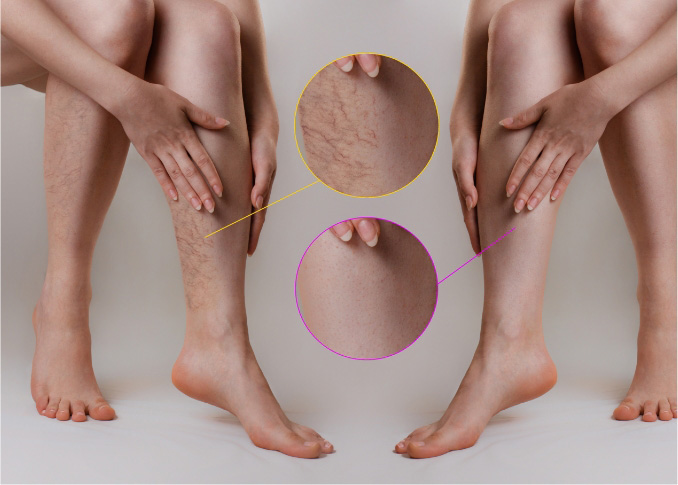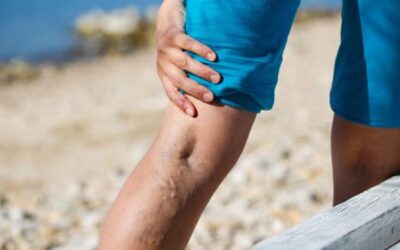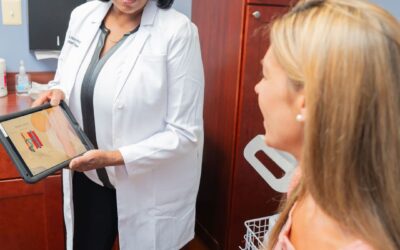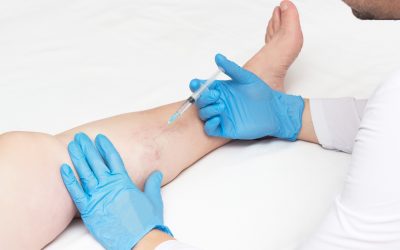Top Maryland Vein Doctors
What Effect Does Sclerotherapy Have On Varicose Veins? And Other Vein Treatment FAQs
What effect does sclerotherapy have on varicose veins?
What effect does sclerotherapy have on varicose veins? If you’re asking that question, it’s fair to assume that you have varicose veins and are considering sclerotherapy treatment. The only way to answer this question is by offering background on varicose veins and sclerotherapy.
Understanding spider veins, varicose veins, and vein disease
Spider veins and varicose veins are extremely common vascular conditions caused by underlying chronic venous insufficiency. Spider veins are dense clusters of blood vessels that appear on the skin’s surface, and varicose veins are blood vessels that bulge out of the skin’s surface in twisted and tangled knots. Varicose veins are generally larger than spider veins, and they’re also representative of advanced chronic venous insufficiency.
Chronic venous insufficiency is the primary root cause of spider veins and varicose veins. Venous insufficiency is a medical condition wherein the collapse of vein valves leads to backward blood circulation and the accumulation of blood in leg veins. As blood continues accumulating in the leg veins, the vein walls expand and dilate, eventually leading to spider veins and bulging varicose veins.
Sclerotherapy: the best minimally invasive spider vein treatment
Sclerotherapy is the best minimally invasive treatment for spider veins and small varicose veins. During sclerotherapy, the vein doctor carefully injects sclerosant medicine into the unhealthy spider veins and varicose veins. The sclerosant medicine irritates the walls of the veins, making them swell and shut down. The accumulated blood reroutes into healthier leg veins. The spider veins and varicose veins turn into hardened scar tissues eventually metabolized by the body.
Sclerotherapy is primarily meant for spider veins, but it can also treat extremely small varicose veins. As such, this procedure is extremely effective against spider veins, but its efficacy suffers against varicose veins. One sclerotherapy session can remove up to 80% of your spider veins within 2 to 3 weeks, but it can remove your varicose veins after 2 to 6 months.

We know health insurance is confusing so we will help you check if you’re covered:
FREE Coverage Checker:
Foam sclerotherapy: an ideal alternative for varicose veins
Some vein doctors provide foam sclerotherapy, a modified version of the traditional sclerotherapy, which is more effective against varicose veins. Foam sclerotherapy is a procedure wherein the sclerosant liquid is agitated with air to produce a foamy solution that can cover more space, making it suitable for large varicose veins. Injecting foam sclerosant into varicose veins irritates their walls, turning them into hardened scar tissues eventually metabolized by the body.
Contact our medical centers for vein treatment in Maryland
Our medical centers for vein treatment in Maryland specialize in the latest and safest minimally invasive treatments for spider veins and varicose veins. Our vein doctors examine your leg veins, review your medical history, and personalize unique treatment plans to address the root cause of your vein problems and remove the superficial varicose veins and spider veins. We may provide sclerotherapy, foam sclerotherapy, or other minimally invasive procedures, depending on your unique condition.
Please schedule an appointment to explore your vein treatments in Maryland.
Can sclerotherapy make your veins worse?
Sclerotherapy can’t make your veins worse or lead to new spider veins. However, your spider veins will seem to worsen before they get better after your sclerotherapy session. That’s because the sclerosant medicine fuses the spider veins’ walls, turning them into hardened scar tissues that look dark underneath your skin. However, the dark spider veins will gradually fade away from your skin’s surface as the scar tissues are metabolized by the body.
What are the cons of sclerotherapy?
Sclerotherapy is the most effective spider vein treatment available. But no treatment is perfect. Sclerotherapy involves a small risk of skin discoloration — the more powerful the sclerosant solution, the higher the risk of skin discoloration. But the most experienced vein doctors can perform sclerotherapy in such a way to prevent skin discoloration and other major side effects. Furthermore, sclerotherapy can only treat the visible spider veins and varicose veins — it can’t treat the root cause of your spider veins.
Do varicose veins come back after sclerotherapy?
Varicose veins are usually indicative of underlying chronic venous insufficiency. Sclerotherapy is an effective treatment for spider veins and small varicose veins, but it doesn’t treat underlying vein disease. If you undergo a sclerotherapy treatment for varicose veins without diagnosing or treating underlying vein disease, there’s a strong chance that your varicose veins will return. But if your vein doctor diagnoses and treats vein disease before removing the varicose veins, the risk of recurrence is negligible.

Visit Our Maryland Vein Treatment Center
How long does it take for varicose veins to disappear after sclerotherapy?
Sclerotherapy is generally meant for extremely small spider veins on the skin’s surface. As such, sclerotherapy treatments can make varicose veins fade away after 2 to 6 months.
What happens if I don’t wear compression stockings after sclerotherapy?
You must wear compression stockings after sclerotherapy to prevent blood from accumulating in the leg veins. If you don’t wear compression stockings, the collapsed veins will refill with blood, and the spider veins might reappear. That’s why you must wear compression stockings for a few weeks after sclerotherapy.
Should you sleep in compression stockings after sclerotherapy?
After sclerotherapy, you should wear compression stockings 24/7 for a few days or weeks. You should even wear compression stockings while sleeping and only take them off while showering.
What should I avoid after sclerotherapy?
After sclerotherapy, you can resume most of your daily activities and work immediately. But you should follow some aftercare guidelines and avoid the following:
- Direct exposure to sunlight
- Hot baths and saunas
- Steam rooms
- Strenuous physical activities
- Heavy lifting
- Applying hot compresses to the area



